Fry harder: more adventures in hot oil
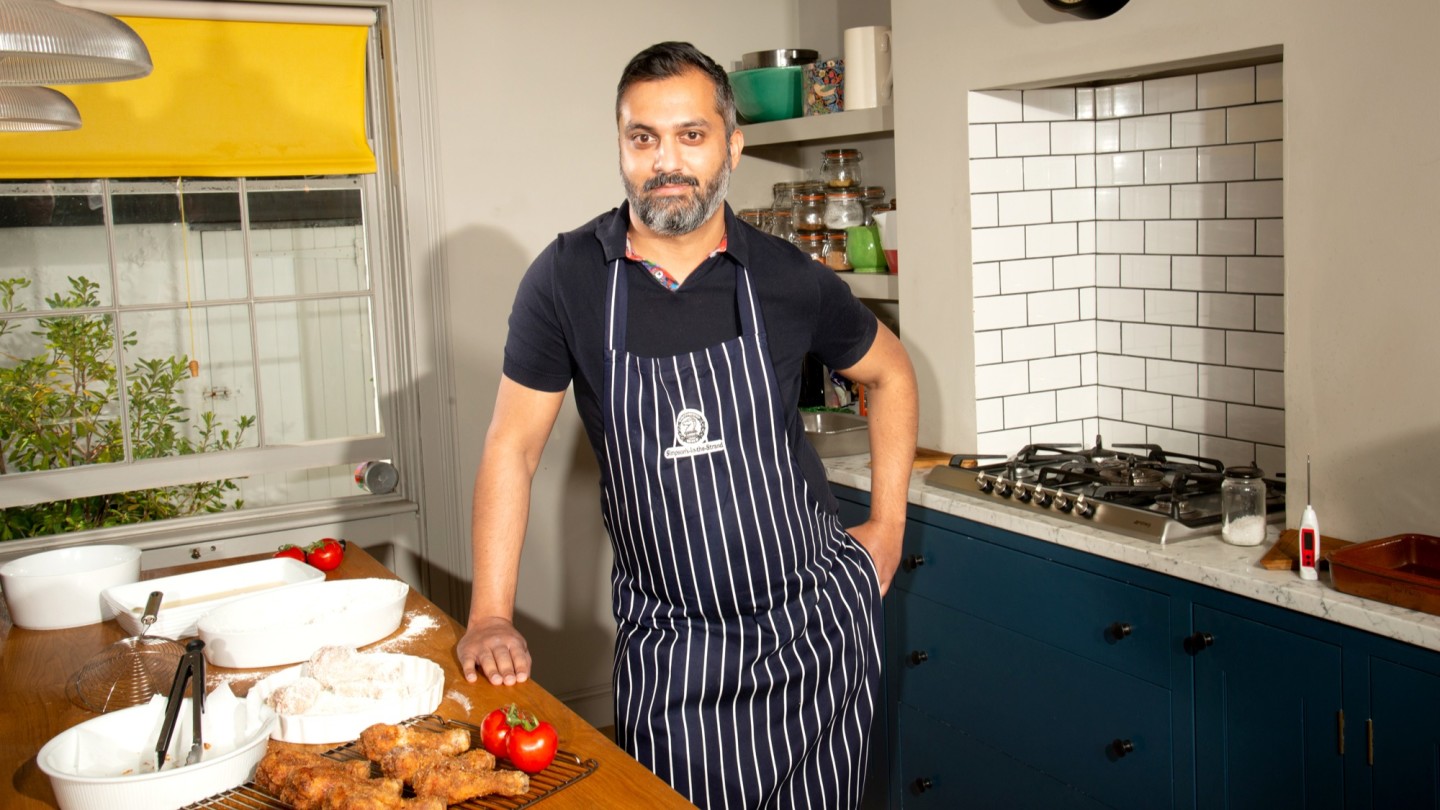
Roula Khalaf, Editor of the FT, selects her favourite stories in this weekly newsletter.
Some pieces of equipment you acquire for your kitchen, try once and never use again. I’m thinking here of the fish kettle I bought on a whim some years ago in order to make Cantonese-style steamed fish. Now it languishes at the back of a cupboard gathering dust. Other pieces of equipment you bring into your kitchen and they change the way you cook. They change you. They open up possibilities, spark ideas. Now you have them, you realise there is no going back. You are a different person. You are a person, in my case, who loves to deep-fat fry.
A few issues ago, I wrote a piece about making chips at home. For that column, I borrowed a deep-fat fryer from Tefal, its Oleoclean Pro model, which I liked because it filters the oil between sessions for easy reuse. Chips, as I discovered, don’t shed that much during frying, so the same oil was good (with some topping up) for several fries. I made a lot of chips. But the chips were just the gateway.
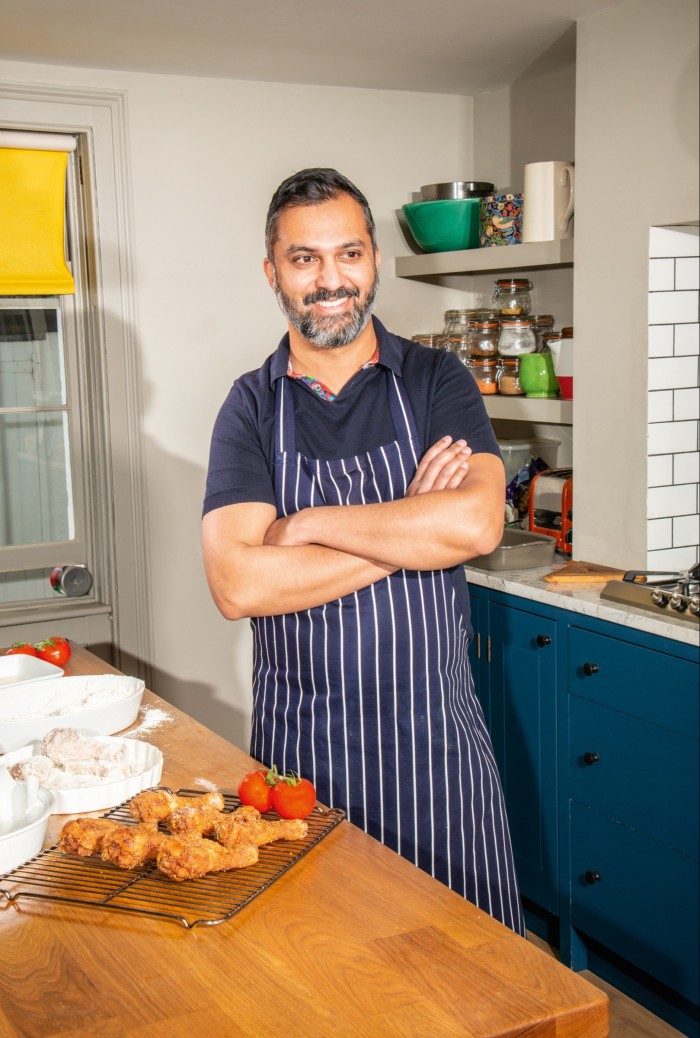
I moved on to vegetable tempura: baby courgettes, broccoli, aubergine, mushrooms. After a few uneven attempts where the batter failed to stick (possibly because the recipe I was using didn’t include egg), I consulted Taiji Maruyama, executive chef of Taka Marylebone (one of last autumn’s most exciting new restaurants) and the soon-to-open Maru in Shepherd’s Market, London, who shared his batter recipe: 100g strong flour, 15g potato starch, 135g cold water, 17g cold sparkling water, 1 egg. The CO2 in the fizzy water, he explained, helps speed up the deep frying and expel water from whatever you’re frying, so you get a crisper batter. Also, to minimise gluten formation and guarantee a lighter crust, he suggested using ice-cold water, chilling the flour in the fridge and mixing the batter as little as possible. I ended up with something much more tempura-like, this time using prawns. And, really, is there any better kind of tempura? Encased in hot, crispy batter, the prawns had a plump, springy texture and sweet juiciness that I loved. I was popping them like M&Ms. I also deep-fried some coriander, following a tip I’d got from countless chefs about using up leftover herbs. The frying deepened the coriander’s already pungent flavour, turning its feathery leaves into intense, crunchy wisps.
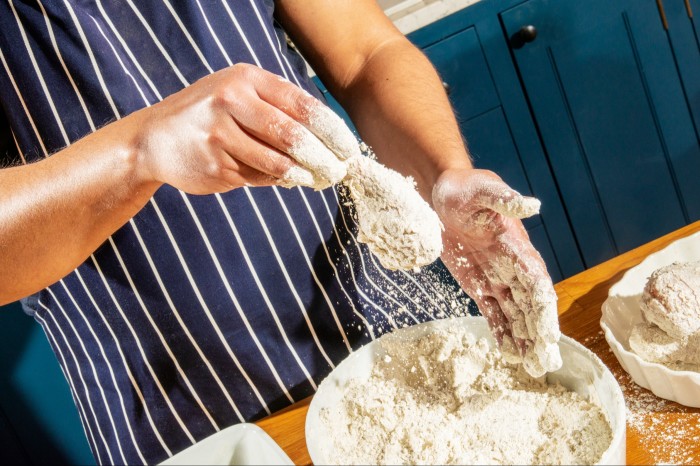
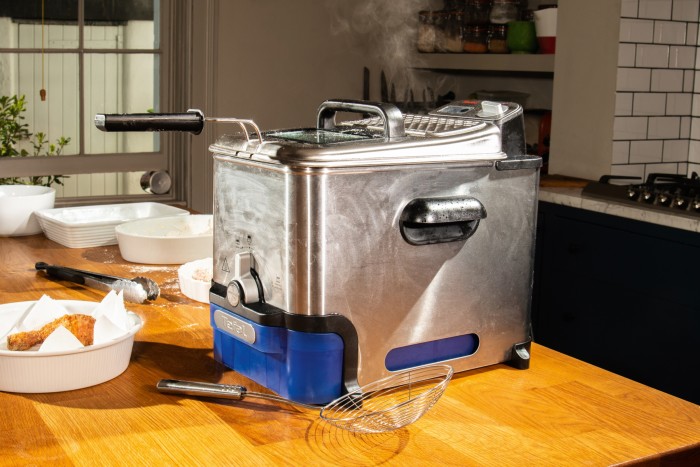
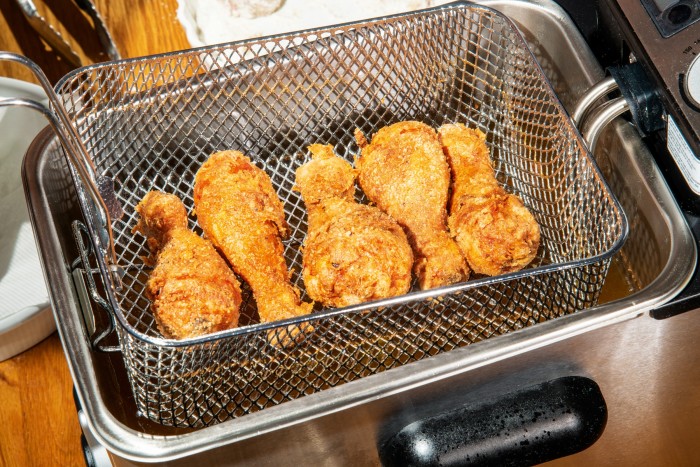
Keen to up the ante, I turned next to perhaps the most prized food in the frying pantheon: fried chicken. First, I wanted some pointers from Andrew D’Ambrosi, the American-born chef behind D’Ambrosi Fine Foods in Stow-on-the-Wold. His southern fried chicken has garnered such a cult following that he’s planning to open a fried chicken boutique in west London this summer. His top tip was about how to dredge the buttermilk-marinaded chicken before frying: “First, you want lots of flour so it remains dry and doesn’t clump. Second, when you drop the chicken into the flour, give it a little squeeze so it exudes some of its marinade. That liquid will bond with the flour and create these delicious crispy ripples on your fried chicken.”
I tried a few recipes. Nigella’s (from Cook, Eat, Repeat) called for a marinade of buttermilk, maple syrup, Dijon mustard, hot-smoked paprika, lemon juice and garlic, before dredging the chicken in paprika-spiked flour. The end result was fine but tame for my tastes, though hers is meant as part of a fried chicken sandwich where pickles, red onion and garlic mayonnaise add oomph. James Martin’s buttermilk chicken (from his website), which I prefer, requires an arsenal of dried spices to season the flour, including oregano, thyme, nutmeg, celery salt, garlic salt and onion salt. The flour was so headily scented I couldn’t stop myself from inhaling deep pungent breaths of it like aromatherapy. Once deep-fried, the strong flavour was tempered but still pleasingly zingy.
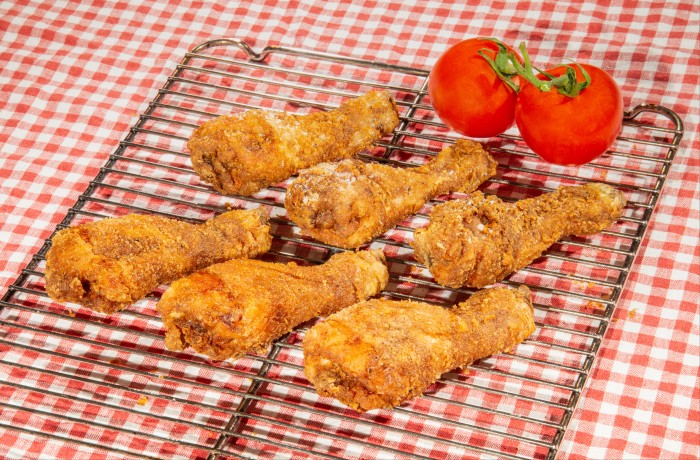
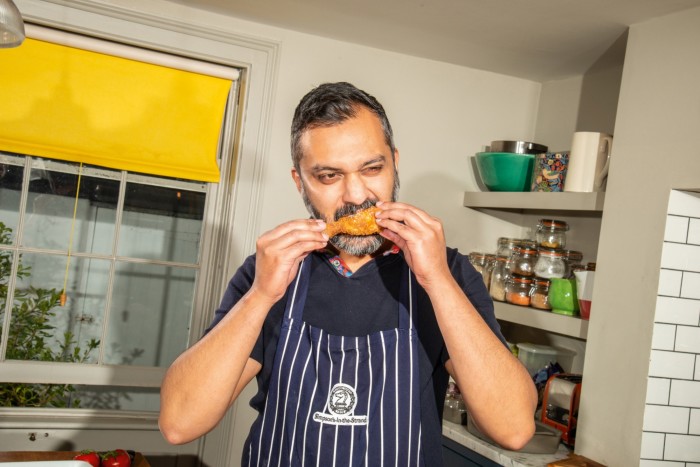
But my craving wasn’t satisfied. I got my taste for fried chicken early, eating KFC, which means I know what I like (a richly flavoured, almost crumbly breading) while accepting there are probably “better” versions. So when the internet brought me to “Grace’s Perfect Blend”, a fried chicken mix from County Limerick based on Colonel Sanders’ original recipe, I was keen to try it. According to its instructions, there was no need to marinate the chicken first. I coated each drumstick in milk and egg, dredged it in the pepper-flecked powder and lowered it into the hot oil. Fifteen minutes later, I had the kind of strongly seasoned, crisp-crumbed fried chicken I’d been after. I binge-ate some with brown sauce, indulging my very worst teenage proclivities.
But why judge? D’Ambrosi serves his fried chicken with a homemade BBQ sauce based on the fast-food versions he grew up dunking his nuggets into. My point is, we like what we like. Deep-fried foods are implicitly a treat, an indulgence. If we’re going to have them, we might as well have them just the way we want them. Guilt-free.
Now, I’m thinking about doughnuts.
Comments